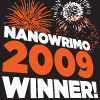.@thereadingzone No better way to spend Earth Day than Skyping w/ awesome students and faculty at High Technology High School, NJ #gratitude
— David George Haskell (@DGHaskell) April 22, 2014
On Earth Day my students were lucky enough to Skype with Dr. David Haskell, author of The Forest Unseen: A Year’s Watch in Nature. Over the course of the school year the students have adopted their own mandalas, a square meter of forest space, and made monthly observations. I work with my biology colleague and the students have been learning how to communicate scientific knowledge to a general audience through informational writing, narrative writing, and poetry. It’s been a magical experience and one I can’t wait to continue next year.
How did this all come together?
In October 2012 my former colleague Jon Olsen and I read an article in The New York Times Science Times about Dr. Haskell with our freshmen. The article struck a chord and we reached out to Dr. Haskell on Twitter. He spoke with the students and eventually we set up a brief Skype session so he could talk about the overlap between the humanities and science. The Skype session went so well that we decided to use his book as a touchstone text between English and biology this year. We placed an order for 80 copies of the book and started planning. We knew we wanted a field study and writing component to go alongside the book and we worked on ideas for the next few months.
In September we introduced the book to our students. They were a little unsure at first because we were telling them that biology and English would work together during the year, combining our classes at least once each month. Thankfully, my school embraces interdisciplinary work so they “saw the light” very quickly.
Over the course of the year our current freshmen have read a variety of essays in Dr. Haskell’s book. In September we broke them into 2 groups of 40 and within the groups broke them into triads. Those triads worked together all year, finding mandalas close to each other and relying on the buddy system during our field studies. They observed organisms, practiced using specialized vocabulary, wrote poems, and sat outside during the polar vortex. We’ve been rained on, sleeted on, snowed on, and now it’s finally starting to warm up. We’ve seen the circle of life, complete with a dead deer carcass in one mandala and a fierce cardinal defending its turf in another.
Before each class we settled on a seasonally appropriate focus and the students read at least one of Dr. Haskell’s essays. You can see our schedule below:
- Sept – perception / selecting & mapping mandalas (preface, April 14th & Sept 23rd): Mike and I chose the same readings and challenged the students to figure out why an English and Bio teacher chose the same ones (without planning it that way).
- Oct – respect / identifying a resident organism (March 13th & April 22nd), writing a descriptive paragraph modeled after Dr. Haskell’s.
- Nov – ecological succession / change / spectrophotometry & color / wavelengths (Nov 5th), writing a poem modeled after a few nature poems we studied in class.
- Dec – adaptations (structural & behavioral) / breathing / your response to cold (Jan 21st & Dec 3rd,) writing a description of the way the cold infiltrates the human body.
- Jan – patterns / Kepler’s snowflakes (Jan 17th), studying snowflakes and writing haikus.
- Feb – habitat / food + cover + water (Nov 15th), creating a photo slideshow and brief description of their mandalas
- March – equinox / seasonal change, preparing for Dr. Haskell’s visit.
You can see a sample of the instruction sheet here. Each month it changes based on the focus.
This is one of the best projects I have ever been involved in. The biology and English combination is pure magic and I love having the opportunity to teach a bit of science communication.
Dr. Haskell took an hour out of his day earlier this week to read some of the students’ writing, look at their Flickr group, and share his expertise. It was fabulous and I couldn’t ask for anything better as an English teacher! Thank you to Dr. Haskell!
Interdisciplinary work is the best. The world isn’t divided into neat little subject boxes like the constructs we model in schools. Life is messy, subjects mingle together. But communication, reading and writing, is vital regardless of the field students may choose to pursue. Appreciating the environment that surrounds them is also vital to our wellbeing as a species.
Filed under: PLC, science, storytelling, Voices from the Land, writing | Tagged: David George Haskell, David Haskell, Forest Unseen, High Technology High School, narrative writing, STEAM, STEM | Leave a comment »















 17-year-old Banyan is a tree builder. Using salvaged scrap metal, he creates forests for rich patrons who seek a reprieve from the desolate landscape. Although Banyan’s never seen a real tree–they were destroyed more than a century ago–his missing father used to tell him stories about the Old World.
17-year-old Banyan is a tree builder. Using salvaged scrap metal, he creates forests for rich patrons who seek a reprieve from the desolate landscape. Although Banyan’s never seen a real tree–they were destroyed more than a century ago–his missing father used to tell him stories about the Old World.
